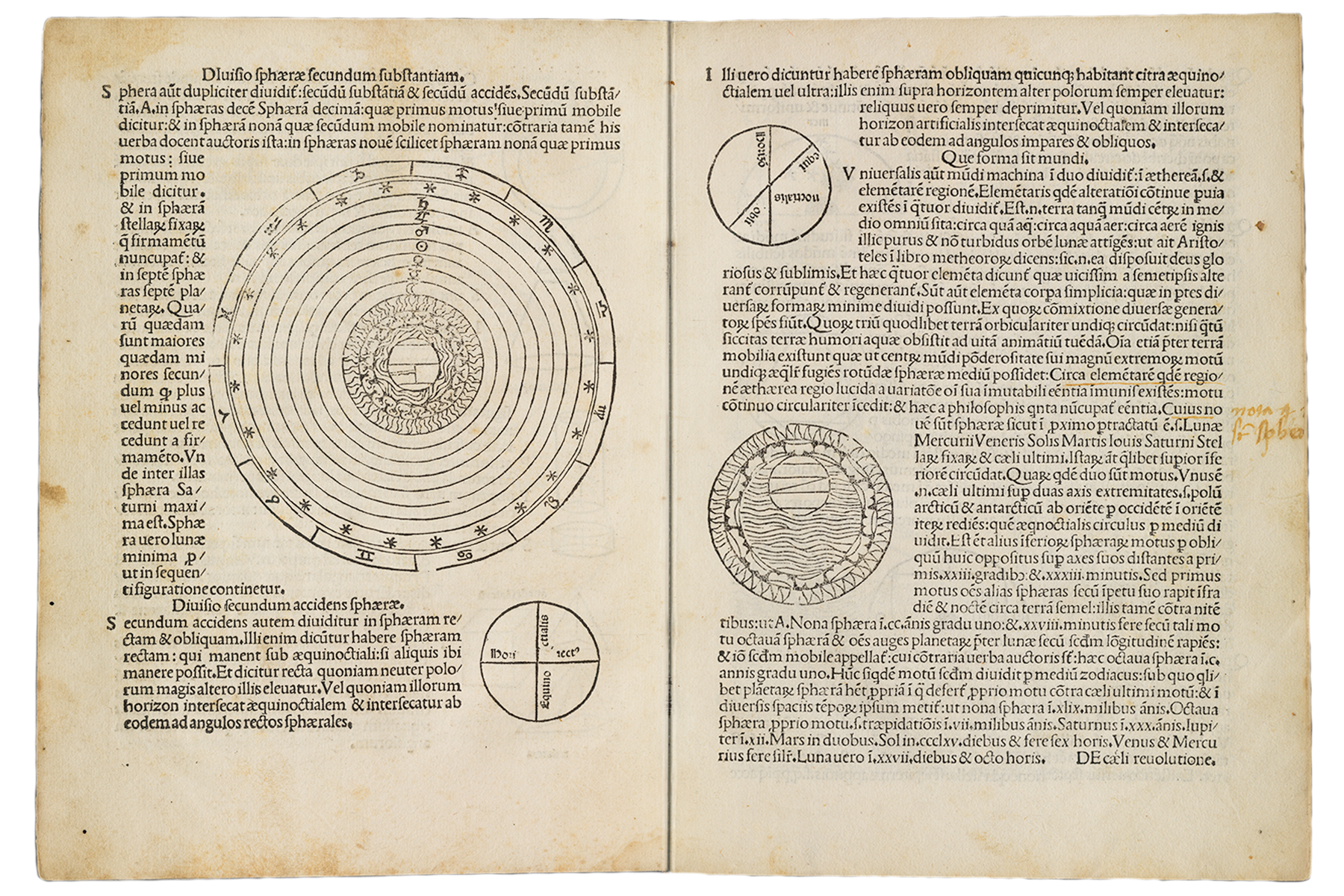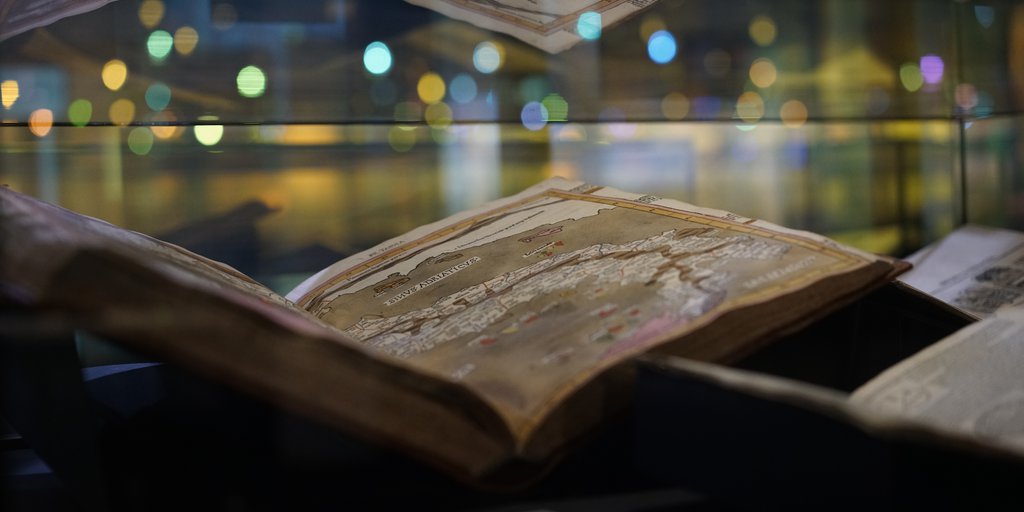
The World, Great and Small <
The ancients called man a world in miniature, and that is well-said, because indeed man is made of earth, water, air, and fire, and thus his body is like the Earth. Just as man has bones as a support and framework for his flesh,
so the world has stone to support the Earth …
Leonardo da Vinci
Paris MS A, fol. 55v. Translation: Amanda DeMarco
Visual arts, science, and technology were closely intertwined in 15th-century Italy. At the same time, the individual disciplines were part of the evolution of a more comprehensive worldview and the intensive exploration of the relationship between the macrocosm and the microcosm.
The worldview at large continued to rely on the geocentric tradition handed down from antiquity, with the Earth as the center of the universe surrounded by different hierarchically arranged spheres, from the sphere of water to the sphere of the fixed stars. The steady growth of knowledge, due not least to the geographical insights gained by voyages of discovery, increasingly called this view into question. In addition, intensified studies of nature in general and of the human body in particular, expanded knowledge of the world on the small scale.
It was hoped that this would lead not only to advances in science, medicine, and artistic representation, but also to a deeper understanding of the fundamental principles of life. The quest for such knowledge of nature was a central motif in Leonardo da Vinci’s creative work. The rapid development of printing continually increased the knowledge sources available to the artist-scientist, facilitating his search for an integrative worldview. At the same time, he was able to help shape this worldview through his own contributions: on a small scale through his analytical studies of the human body, and on a large scale through maps and depictions of astronomical phenomena.
Leonardo's Berlin Library: Section 9 <
- 89.
De situ orbis
Translated by Guarinus Veronensis and Gregorius de Tipherno Venice: Philippo Pincio, 1510
- 90.
Cosmographia
Edited by Nicolaus Germanus and translated by Jacobus Angelus.
- 91.
Alexandri Aphrodisiensis maximi peripatetici, In quatuor libros
meteorologicorum Aristotelis, commentatio lucidissima,
Alexandro Piccolomineo interpreteVenice: Scotus, 1548
- 92.
Sphaerae mundi compendium foeliciter inchoat
Venice: Octavianus Scotus, 1490
- 93.
Vier Bücher von menschlicher Proportion
Nuremberg: Hieronymus Andreae, 1528
 | 92.
Sphaerae mundi compendium foeliciter inchoat Venice: Octavianus Scotus, 1490 |

The treatise Tractatus de sphaera or Sphaera mundi by the English astronomer and mathematician John of Holywood or Johannes de Sacrobosco (1195–1256), is a four-volume compilation of knowledge about ancient and medieval astronomy. It was used—in a great variety of versions—as a standard textbook
of cosmology into the 17th century. In his book lists from 1495 (3 ▲) and 1503/04 (4 ▲), Leonardo recorded a “spera” or “spera mundi,” which probably referred to Sacrobosco’s work. Moreover, in a definition of the sphere in the Codex Atlanticus, he seems to draw on passages from this work. The double page shown here explains the model of the spheres with the aid of a diagram: At the center is the Earth, surrounded by the sublunar spheres of the elements (water, air, fire) followed by the seven planetary spheres, the spheres of the fixed stars, and finally the outer spheres, the secundum and primum mobile.
References
Bambach, Carmen C. 2019. Leonardo da Vinci Rediscovered. Vol. 3: The Late Years 1506–1519. 4 vols. New Haven / London: Yale University Press, 264.
Hamel, Jürgen. 2014. Studien zur “Sphaera” des Johannes de Sacrobosco. Leipzig: Akademische Verlagsanstalt (AVA).
Vecce, Carlo, ed. 2019. Leonardo and His Books. The Library of the Universal Genius. Exhibition catalogue Museo Galileo, Florence, 6.6.–22.9.2019. Florence: Giunti, 102, no. 8.1.
Wu, Meagan. 2019. In Leonardo’s Library. The World of a Renaissance Reader, edited by Paula Findlen. Stanford, CA: Stanford Libraries, 163,
no. 29.









